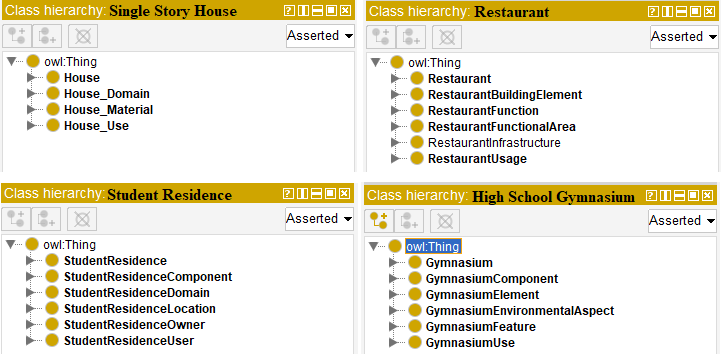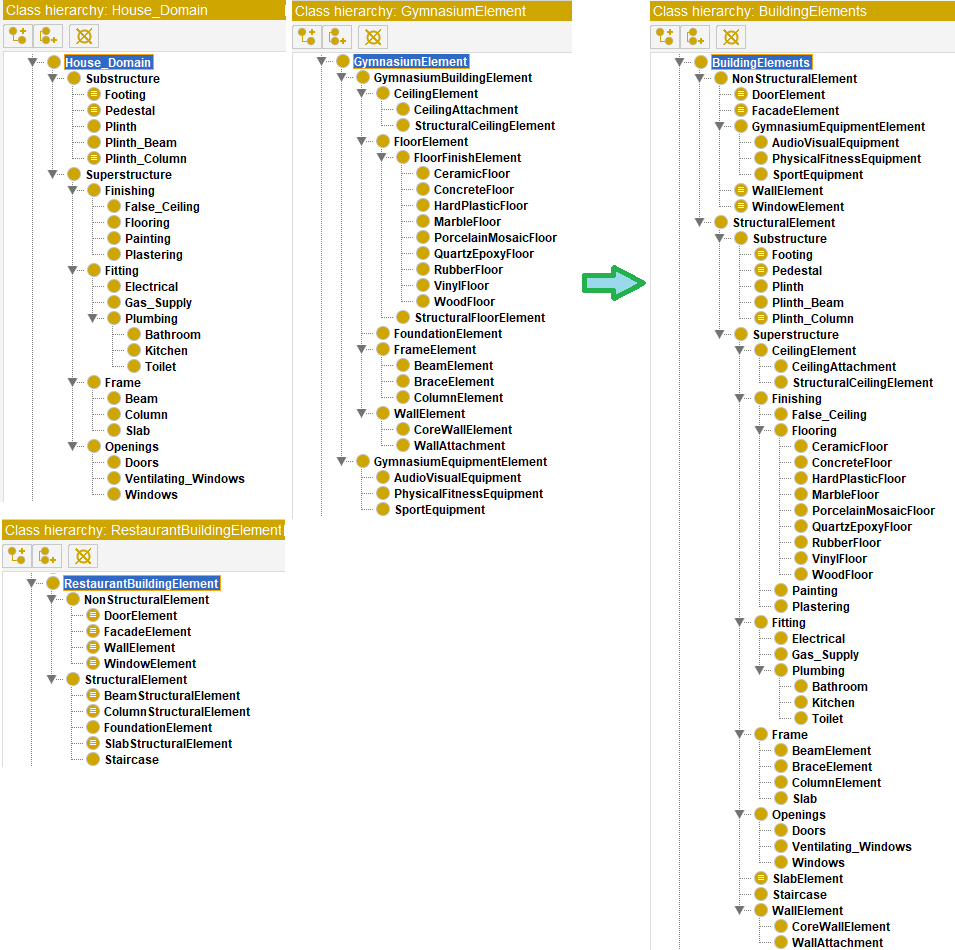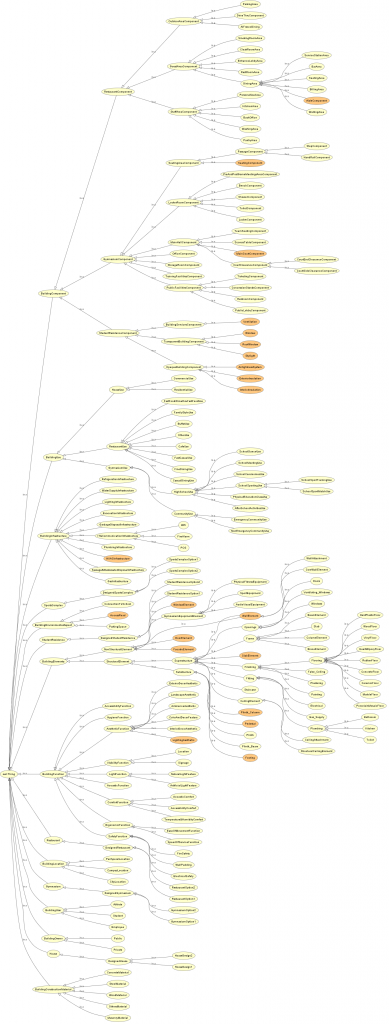Updated Competency Questions
Purpose
The ontology is developed to represent concepts required for the design of a sports complex. This civil system includes four sub systems which are student’s sport venue, accommodation for the students, accommodation for the employees’ and eating facility . The development of the ontology was based on previous research conducted on the technical details of the four separate systems.
Scope
The ontology will represent concepts such as components, functions, infrastructures, features, use, users, environmental aspect and elements of a sports complex. Furthermore, it will represent possible interaction the sub parts of the sports complex with each other and with their environment. Each of the concept along with their relationship will be represented in the ontology.
Intended users
The ontology developed for a sports complex will have many benefits in future design of such facilities. Public and private schools or collages, architects and engineers and other players in the design of a sports complex are the intended end-users of the ontology.
Schools or universities can use it to identify and sort their need. They will have the necessary knowledge of the components of a sports complex, its required features, expected use, environmental interaction, and the relationship between these concepts.
Intended use
The ontology is intended to be used as knowledge representation to support the design of a sports complex that include four main sub parts which are discussed on previous paragraphs.
Integrating the Ontologies
The integration of the four individual ontologies (High school gymnasium, Restaurant Design, Single Story House and Student Residence Building) included few necessary steps. These are combining, aligning, re-organizing and extending.
1. Combining Ontologies
To begin the integration process, the four individual ontologies were all opened in a single protégé window. Then, using protégé natives merging tool (‘Merge ontologies’), the were merged into a single ontology. At this point we had our first copy of the combined ontology which we called ‘Sports Complex Ontology’.
At this early stage, the combined ontology had 243 classes, 89 object properties, 59 data properties, 79 individuals and 1430 Axioms. However there is more actions required to make the ontology ready for use.
The first challenge encounter after the combining the ontologies was the difference in the naming convention. As shown on the picture below, the Single story house ontology (Top left figure) used a different naming system than the rest of the ontology. Since 3 out of the4 ontologies used PascalCase naming convention, the same was applied to the single story house ontology.

2. Alignment
Our next task was looking for correspondence between the combined ontologies. For instance, in the high school gymnasium ontology, we had a class ‘GymnasiumEnivaronmentalAspect‘. This class had subclasses that represent environmental aspects of a gymnasium. However these aspects can also be applied to the rest of the systems. Hence the class was renamed to ‘BuildingEnivaronmentalAspect‘. An existing object property ‘hasEnvironmentalAspect‘ was used to create relationships between all the systems in the sports complex with the ‘BuildingEnivaronmentalAspect. Examples of the new axioms created based on this for all the four systems are the following.
- ‘hasEnvironmentalAspect value HandicappedAccess’
- ‘hasEnvironmentalAspect some AccessRoad’ and ‘hasEnvironmentalAspect some ParkingSpace’
3. Reorganizing the Ontology
The combined ontology need to be reorganizes to represent a unified knowledge base. Some examples of the reorganizing work are explained below.
Building elements (structural and non structural) are represented by different classes on three of the individual ontologies. There were some similarities and dissimilarities on how each ontology represented building elements. Hence, we needed to have a discussion on how to reorganize and create a unified building element class and its sub-classes. As a result a ‘BuildingElement‘ class were created. It’s subclasses were aggregate from the individual ontologies. Some subclasses were identical and hence were merged along with their relationships. This class and its subclasses after reorganizing can be seen on figure 2. The three class hierarchy on the left are from the individual ontologies. And class hierarchy on the right is the reorganized ‘BuildingElement‘ class and its subclasses in the combined ontology.

Similar reorganization was also done regarding classes representation of building use, component, function and infrastructure. The four ontologies had classes representing these concepts. All these classes were aggregated and organized in order to represent the knowledge in an organized way.
4.Extending the Ontology
To fully represent concepts required for the design of a sports complex, new classes needed to be created and new relationships needed to be established. To this end one of the new classes added was a ‘SportsComplex‘ classes. Under this class two individuals that represent two different design options were created.
New relationships were formed to relate the sports complex with concepts such as location, owner and user. Some of them are the following.
- hasLocation some BuildingLocation
- hasOwner some BuildingOwner
- hasUser some BuildingUser
After combining aligning, reorganizing and extending the ontology, we finally had an organized and unified ontology that represent concepts and relationship related with the design of a sports complex.
Graphical Representation of the Integrated Ontology
A graphical representation of the integrated ontology using OWLViz is given on figure 3. To get a clear view of the objects please click on the image.

Download the Ontology
The integrated ontology (Sports Complex Ontology) can be downloaded by clicking the download button bellow . Or right click on the ‘Download ontology’ button and click on ‘Save link as …’ then save the OWL file to your computer.
Navigation

